A summer reading list by yours truly.
You ask: what are the central themes running through this list?
Memory! Art! Identity! Specters!
1. The Sympathizer, Viet Thanh Nguyen
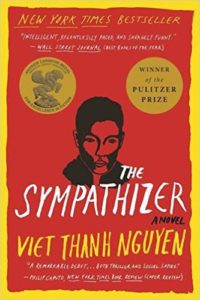
From an excerpt of an interview with the author by Paul Tran:
Tran: It is very clear that The Sympathizer rejects the bifurcated notion of resistance and assimilation by deploying a voice that is at once self-reflective and looks at everything critically, addressing everyone. When that voice addresses everyone, would you say everyone is the audience for this book? To be more specific, as a young writer I turned to Toni Morrison’s Playing in the Dark to think about the ways in which writers of color have been tempted to write for dominant gazes. That was not something I felt while reading The Sympathizer. By writing and addressing everyone’s complicity in the war, does the novel avoid turning to the dominant gaze?
Nguyen: I was very conscious of what Toni Morrison has said about how she writes. She always writes about black people and says black experiences are already universal. There are no apologies in her work. It was very important to me that there be no apologies, no translations, no explanations in this novel because these are signs of writing towards a dominant culture. So instead, I deliberately structured the book with an audience inside, as a confession towards another Vietnamese person. […] I did not want to write this book as a way of explaining the humanity of the Vietnamese. Toni Morrison says in Beloved that to have to explain yourself to white people distorts you because you start form a position of assuming your inhumanity or lack of humanity in other people’s eyes. Rather than writing a book that tries to affirm humanity, which is typically the position that minority writers are put into, the book starts from the assumption that we are human, and then goes on to prove that we’re also inhuman at the same time.
2. The Goldfinch, Donna Tartt
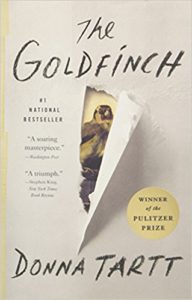
Goodreads reviewers say this book has its good moments but can be bloated and sometimes repetitive. Involves art museums. Maybe I can take a few hints of what to do and what not to do.
3. I Have the Right to Destroy Myself, Young-ha Kim
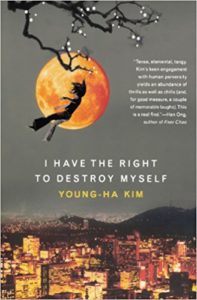
A reread! Currently one of my favorites, though I would give a trigger warning for suicide. I can study the form of the book because it’s so short (119 pages), and art/museums & ennui just permeate everything in the novel(la?). The prose can be quite chilling. Puts me in a weird mood for a bit. From the back of the book:
A spectral, nameless narrator haunts the lost and wounded of big-city Seoul, suggesting solace in suicide. Wandering through the bright lights of their high-urban existence, C and K are brothers who fall in love with the same woman – Se-yeon. As their lives intersect, they tear at each other in a struggle to find connection in their fast-paced, atomized world. Dreamlike and cinematic, I Have the Right to Destroy Myself brilliantly affirms Young-ha Kim as Korea’s leading young literary master.
4. Einstein’s Dreams, Alan Lightman
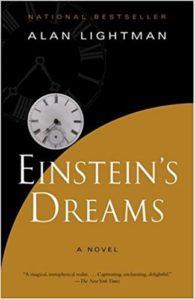
Another short book and another reread! A collection of vignettes that is just so beautiful and feels speculative & historical at the same time. From the Wikipedia summary:
The novel fictionalizes Albert Einstein as a young scientist who is troubled by dreams as he works on his theory of relativity in 1905. The book consists of 30 chapters, each exploring one dream about time that Einstein had during this period.
5. Pedro Páramo, Juan Rulfo
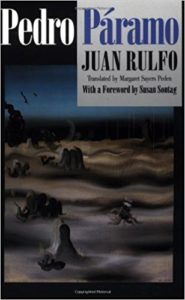
A book I’ve wanted to get to for a while. From Wikipedia:
about a man named Juan Preciado who travels to his recently deceased mother’s hometown, Comala, to find his father, only to come across a literal ghost town – populated, that is, by spectral figures.
According to Gabriel Garcia Marquez, this book helped him out of his writer’s block, pushing him to write One Hundred Years of Solitude. (Borges loves it too!)
and of course…
Both volumes of Memory: A Network of Links (available on lulu.com!). Buy at a low price! But don’t expect anything in it that you can’t find online…